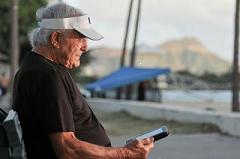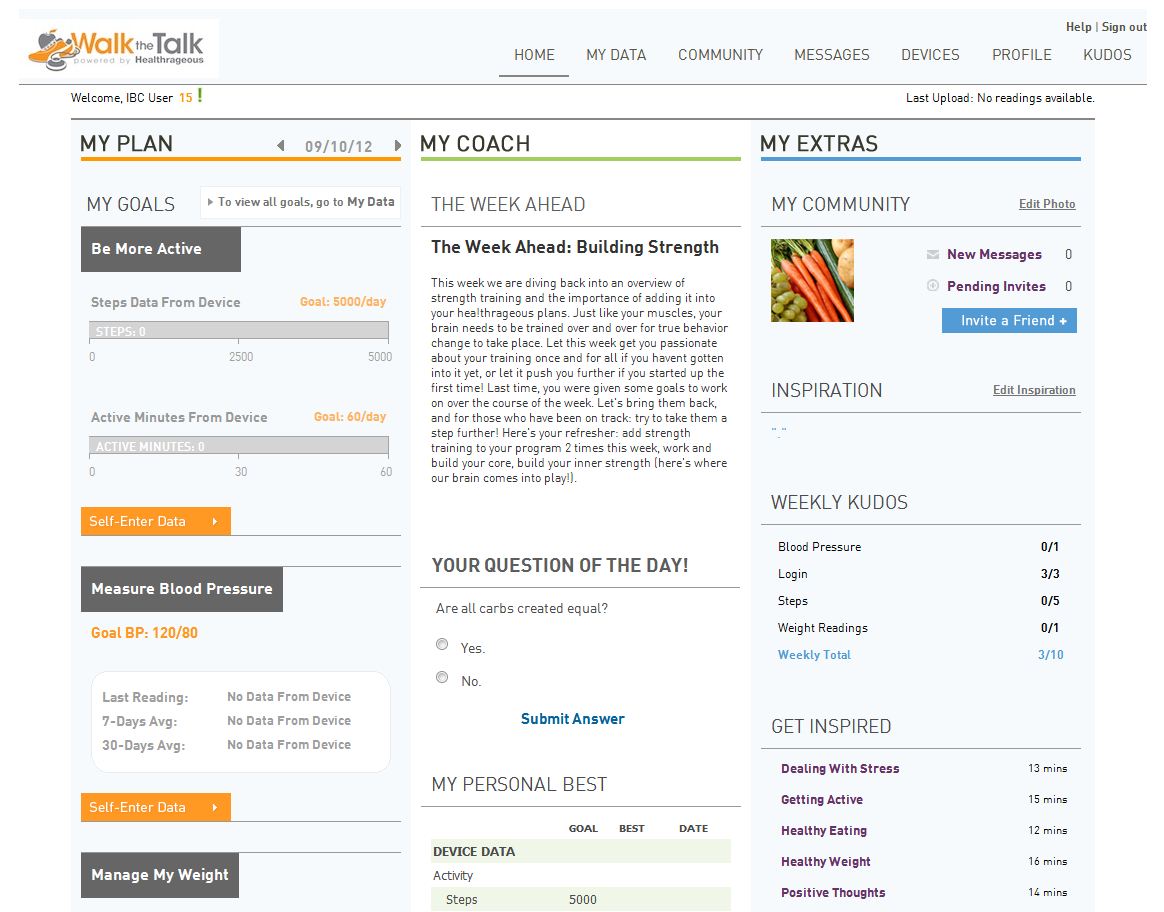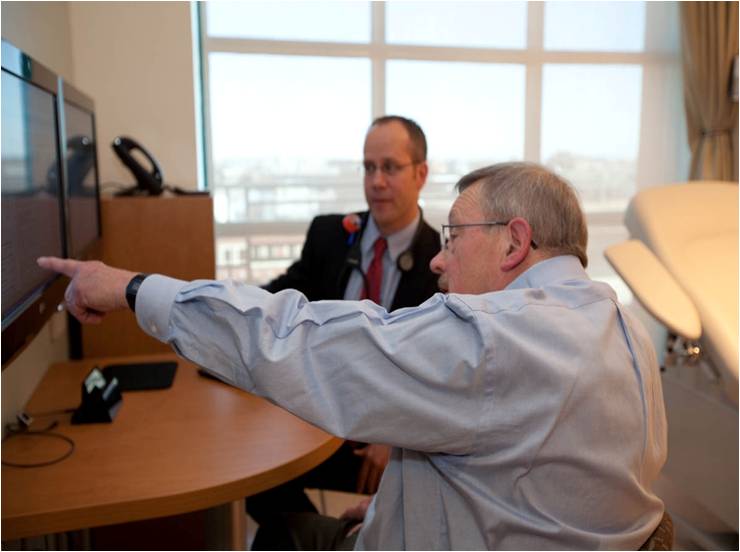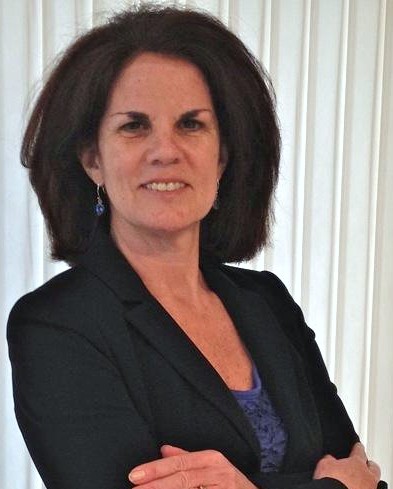Walmart Drives Consumer Health Engagement Through Partnerships with HumanaVitality & SoloHealth
 November 26, 2012
November 26, 2012  SoloHealth Station
SoloHealth Station
Patients Engage with Data & Tools for Better Health Decisions and Health Management @ Partners' Connected Health Symposium
 November 5, 2012
November 5, 2012 
During the 9th Annual Partners’ Connected Health Symposium, several speakers shared examples about how consumers are taking responsibility for their health by using online and mobile tools. Given the changes in health reform, Providers and Payers welcome patients taking on a more active role in both monitoring and managing their health.
1. Trackers for Self Management:
Susannah Fox presented findings from the latest research by the Pew Internet Project and the California HealthCare Foundation which focused on self-tracking. One interesting insight is the segment of adults who track a “health indicator or symptom”; “62% of adults living with two or more chronic conditions is self- tracking”.
The research also revealed that only one third of all self trackers shared this information with someone and half of those shared with a clinician and the other half with a member of the family, group or a friend.
2. PHR with Mobile Capture of Observations of Daily Living (ODL):
Patricia Flatley Brennan, Professor, School of Nursing, University of Wisconsin, discussed the insights that can be gained by “listening in the moment”. Patricia provided an overview of the Project HealthDesign’s five projects for this second round. I was particularly interested as she described how these projects capture the “words of the patient” about their observations of daily living.
Imagine the tremendous value in sharing the patient’s words not only to help the clinician communicate in a way that resonates with the patient but also to discuss the observation data patterns and their impact on the patient’s live.
After the conference, I reviewed the projects on the Project HealthDesign website to get a better understanding about the tools that were being used by patients. Several projects entail having the person enter the observations into their mobile phone; symptoms for Asthma, pain and energy levels for Crohn’s disease, caregiver stress for high risk babies and moods for Obesity. For the project focused on elders, I was interested to see sensors being used to collect information to monitor their cognitive decline.
3. Online Patient Communities
Right from the beginning, I knew this panel was designed to be provocative- “Online Patient Communities are an effective way to Deliver Care”. Alex Drane, moderator and CVO at Eliza explained the panel's focus on peer to peer patient communities without clinicians.
Shouldn’t this panel really have been titled “Online Patient Communities are an effective way to ‘support’ care”? So much has been written about the strong value that patients receive sharing their experiences.
Taking patient communities to the next level, it would be interesting to consider how one type of patient community differs from another. Is there the same intensity of involvement for different types of conditions? Do patients participant in them mostly when they are diagnosed or do they stay on to give back? Are patients using the tracking tools and sharing with others in the community? Are there examples where clinicians are successfully participating in these patient communities?
Opportunities to Empower Patients with Data & Tools
Healthcare organizations have any opportunity to provide data and tools as resources to support consumer health management. Here are some areas that I am closely watching.
Connecting the Data Dots on Health: As a patient gathers information from the various tracking tools, how can this information be combined with other data about him to provide a more comprehensive picture to guide their collaborative care decisions? As Joseph Coughlin, Director MIT Age Lab asked during his Symposium keynote “Data, data everywhere but where are the drops of actionable knowledge?”
Interjecting Data into the Discussion: When can the patient discuss this information with their care team and get the needed guidance for behavior change? How can this information be incorporated in to a coaching session as the patient discusses the management of her chronic condition? During an intervention, how can this information support the decision discussion?
Measuring the Impact of the Tools: Each organization will need to think about measuring the elements that make the tool actionable. During her keynote on “e” is for Engagement, Susannah Fox shared a few key measures that they captured for the self trackers including the percent that said their data collection “affected a health decision”, led them to “ask a doctor new question or seek a second opinion” and “changed their overall approach to health”.
As organizations continue to evolve their business models and approaches, these data and tools become more important because they effectively engage patients in their own health. In recent discussions with leading organizations, I have heard about their increasing investments in connecting data and tools to bring more insight to the patient to better manage their health with the support of their care team. What is your organization doing to provide truly engaging online and mobile resources for your patients?
 consumer engagement evaluation,
consumer engagement evaluation,  consumer generated health and wellness content,
consumer generated health and wellness content,  educating consumers about health and wellness,
educating consumers about health and wellness,  mobile health application,
mobile health application,  patient ehealth engagement,
patient ehealth engagement,  self- management health tools in
self- management health tools in  Behavior Change Health & Wellness,
Behavior Change Health & Wellness,  Data Driven Health Engagement,
Data Driven Health Engagement,  Decision Support eHealth,
Decision Support eHealth,  Mobile Engagement Health & Wellness,
Mobile Engagement Health & Wellness,  Patient Decision Support,
Patient Decision Support,  Patient Engagement,
Patient Engagement,  shared decision making ehealth
shared decision making ehealth Independence Blue Cross Leverages Connected Mobile Health to Drive Employee Engagement
 October 30, 2012
October 30, 2012  Healthrageous! engagement platform
Healthrageous! engagement platform
Mass General’s Ambulatory Practice of the Future Engages Patients through Shared Decision Making
 October 24, 2012
October 24, 2012 
More than two years ago, Mass General launched their Ambulatory Practice of the Future, an innovative primary care clinic for employees and adult dependents. Developed as a Patient-Centered Medical home and ACO, today they support 3,000 enrolled patients with three doctors and two nurse practitioners.
This innovative practice was designed for and with patients for a better patient experience. Their experience begins with the initial greeting and extends through ongoing care interactions. There is a strong focus on patient education and empowerment. The care team collaborates to support each patient both in person and online. One of the goals of the practice is to reach patients where they are both physically and with their health.
Designed to Support Shared Decision Making
Once patients enter the welcoming and intimate care setting at The Ambulatory Practice of the Future (APF), they are ready to collaborate with their clinician. Sitting side by side, they review the medical record together and begin the discussion with health goals.
“We actually added a data field to the record called ‘Health and Life Balance Plan’ where we document mutually agreed upon goal(s) for the coming weeks and months and then it is easily reviewed by the patient via their portal after the visit and in preparation for upcoming follow- up encounters”, explains Dr David Judge, Medical Director, Ambulatory Practice of the Future, Massachusetts General Hospital.
This collaborative approach has helped patients who have not historically been able to get engaged around a goal. Dr Judge shares a story about a 54 year old woman with diabetes who was reluctant to discuss next steps in management due to her fear of taking insulin. After allowing her to shape the goals with a focus on other areas of lifestyle management initially, coaching to realize some success and encouraging patience with the process, she has recently decided to proceed with insulin therapy.
Patient Engagement Tools
APF uses shared decision making videos developed by the Foundation for Informed Medical Decision Making to educate patients about screening tests and in managing specific medical issues such as prostate cancer.
Between their visits, patients can access the portal to view their medical information and communicate securely with their clinician. Although the care team can access the EMR from their mobile devices, APF expects that patients will be able to access their portal and records via mobile devices in the near future.
Patients can currently participate in an online visit with their care team. Dr Judge describes one of the complex patients that they monitor closely with frequent virtual visits. “Mr. K is struggling with end stage renal failure, congestive heart failure and it has become difficult for him to come for office visits. Between scheduled virtual visits, emails from the patient and his wife and monitoring by visiting RNs, we are able to manage his needs fairly well with rare office visits. We are on the verge of implementing true remote monitoring technologies but currently the patient or RN need to report the measures (i.e. blood pressure, weight, blood sugar, PHQ 9 depression score, etc.).”
On the prevention side, several employees are using mobile apps to track their daily lifestyle choices regarding exercise and nutrition and sharing the information with their clinicians during their visits.
Future Path to Patient Engagement
During my panel at the recent Shared Decision Making Conference, Dr Judge spoke about some exciting new ways APF will be leveraging technology to engage their patients.
“We will be piloting the concept of 'apprenticeship' in which patients go through a more formal education process with coaching and demonstration of increased knowledge and skill to push the boundary on self management. We are developing programs tailored to specific medical conditions (i.e. HTN, DM and Depression). Goal setting for each patient helps the team to understand how to customize the program and to identify what specific barriers may be preventing success.”
“As we have done with diabetes, we expect that patients will learn not only to change their lifestyle and make healthier choices but also adjust medication in the management of multiple chronic diseases. The care team will be able to monitor and assist but patients will truly drive their own care more effectively from day to day”, adds Dr Judge.
APF is starting a pilot soon using a mobile tablet that “allows very easy synchronous communication to transmit monitored blood pressure and to enable the patient and team to collaborate around lifestyle management and medication adjustment”.
The term “apprenticeship” is being used by Dr. John Moore at MIT Media Lab. Dr Judge explains, “I think it appropriately describes the next step in the evolution of making shared decisions with patients. Beyond that is potentially a mastery of health and the potential for patient - to - patient support to grow. We are hoping to launch both face- to -face and virtual peer to peer interactions in the near future.”
 care collaboration,
care collaboration,  educating consumers about health and wellness,
educating consumers about health and wellness,  self- management health tools in
self- management health tools in  Behavior Change Health & Wellness,
Behavior Change Health & Wellness,  Data Driven Health Engagement,
Data Driven Health Engagement,  Decision Support eHealth,
Decision Support eHealth,  Patient Centered Medical Home,
Patient Centered Medical Home,  Patient Decision Support,
Patient Decision Support,  Patient Engagement,
Patient Engagement,  Patient Portal,
Patient Portal,  Personalization eHealth,
Personalization eHealth,  shared decision making ehealth
shared decision making ehealth Leveraging Technology to Engage Consumers in Shared Decision Making
 September 10, 2012
September 10, 2012  Technology plays a vital role in Shared Decision Making. Join me as I lead this dynamic panel session and learn how you can leverage tools for improved patient centered decisions.
Technology plays a vital role in Shared Decision Making. Join me as I lead this dynamic panel session and learn how you can leverage tools for improved patient centered decisions.
- Piloting and evaluating SDM tools in the Patient Centered Medical Home to drive physician- patient collaboration for better outcomes
- Leveraging a mobile decision support tool to effectively educate consumers and enable them to evaluate their care options anywhere, anytime
- Discovering and defining a Shared Decision Making opportunity to empower and engage seniors and their families
Moderator:
Sherri Dorfman, MBA
CEO, Consumer eHealth Engagement Specialist, Stepping Stone Partners
Panelists:
> Kyra Bobinet, MD, MPH, Head of Senior Care Solutions, Aetna Emerging Business Group
> David C. Judge, MD, Medical Director, Ambulatory Practice of the Future, Massachusetts General Hospital
> Zev Lavon, MBA, PhD, Director, Enterprise Solution Architecture, CareFirst BlueCross BlueShield
Join me and my panelists at the World Congress Shared Decision Making Conference.


